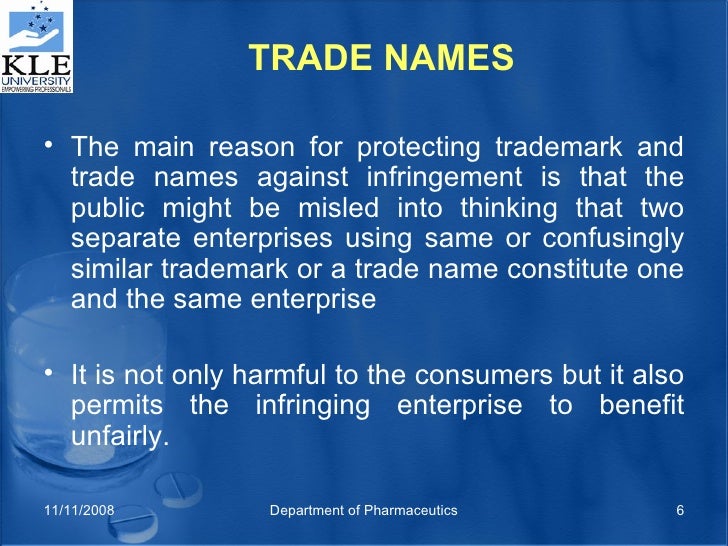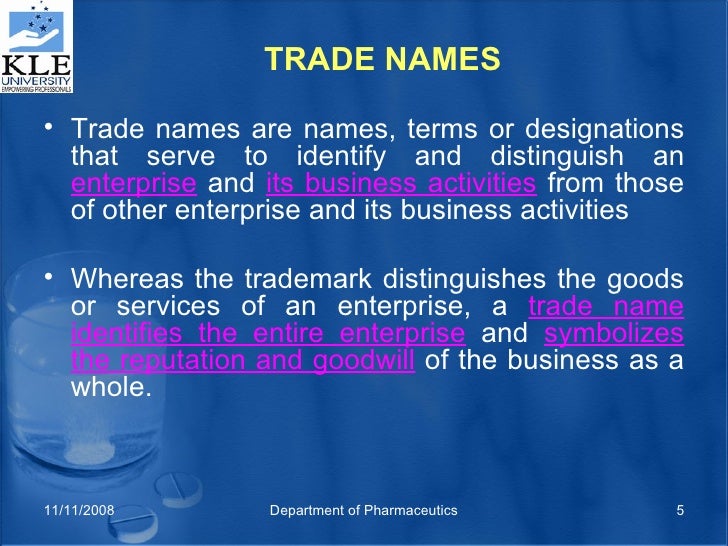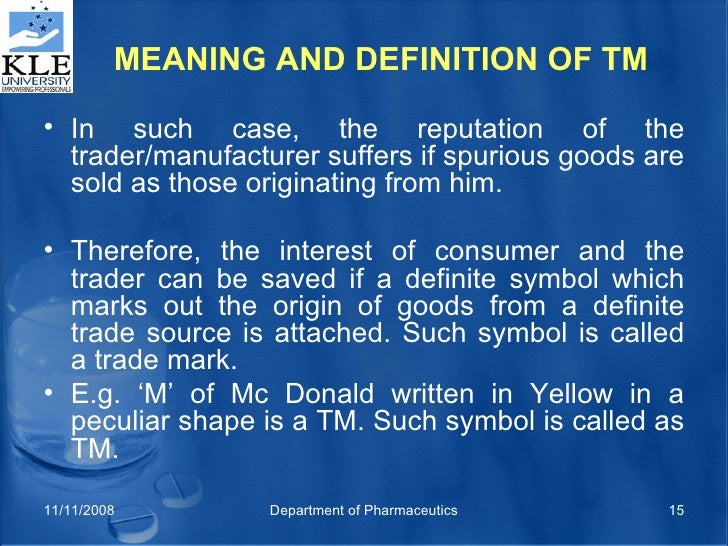What is a Trade Name and Why is it Important?
A trade name, also known as a business name or company name, is the identity under which a business operates. It is a crucial element in building a strong brand identity, as it helps establish a company’s reputation and differentiate it from competitors. A well-chosen trade name can convey a company’s values, mission, and unique selling proposition, making it more relatable and memorable to customers.
In today’s competitive market, having a unique and memorable trade name is essential for businesses to stand out and establish a strong brand presence. A trade name can be used in various contexts, including marketing and advertising campaigns, product packaging, and customer communications. It is also used to create a sense of familiarity and trust among customers, which can ultimately drive business growth and success.
Examples of a trade name can be seen in various industries, such as technology, food and beverage, and fashion. Companies like Apple, Coca-Cola, and Nike have successfully established their trade names as synonymous with quality, innovation, and style. These trade names have become an integral part of their brand identity, helping to build customer loyalty and drive business success.
When choosing a trade name, businesses should consider several factors, including the name’s uniqueness, memorability, and relevance to the company’s mission and values. A trade name should also be easy to pronounce and remember, making it more accessible to customers. By selecting a well-chosen trade name, businesses can establish a strong brand identity and set themselves up for long-term success.
In addition to its role in building a strong brand identity, a trade name also plays a critical role in protecting a company’s intellectual property. By registering a trade name as a trademark, businesses can prevent others from using similar names and protect their brand reputation. This is essential in today’s competitive market, where businesses must constantly innovate and adapt to stay ahead of the competition.
How to Choose a Unique and Memorable Trade Name
Choosing a unique and memorable trade name is a crucial step in building a strong brand identity. A well-chosen trade name can help establish a company’s reputation, differentiate it from competitors, and create a lasting impression on customers. To choose a unique and memorable trade name, businesses should follow a few key guidelines.
First, conduct a thorough trademark search to ensure the desired trade name is not already in use by another company. This can be done by searching the United States Patent and Trademark Office (USPTO) database or by hiring a trademark attorney to conduct a comprehensive search. By conducting a thorough search, businesses can avoid potential trademark infringement issues and ensure their trade name is unique and distinctive.
Next, consider the company’s brand values and mission when choosing a trade name. The trade name should reflect the company’s values, personality, and tone, and should be consistent with the company’s overall brand identity. For example, a company that values innovation and creativity may choose a trade name that is bold and attention-grabbing, while a company that values tradition and heritage may choose a trade name that is more classic and timeless.
In addition to considering brand values and mission, businesses should also ensure the trade name is easy to pronounce and remember. A trade name that is difficult to pronounce or remember can be confusing for customers and may make it harder for the company to establish a strong brand identity. Examples of a trade name that are easy to pronounce and remember include Apple, Google, and Amazon.
Finally, businesses should consider the potential impact of the trade name on the company’s brand reputation. A trade name that is too similar to an existing trademark or that has negative connotations can harm the company’s reputation and make it harder to establish a strong brand identity. By choosing a unique and memorable trade name, businesses can establish a strong brand identity and create a lasting impression on customers.
By following these guidelines, businesses can choose a unique and memorable trade name that reflects their brand values and mission, is easy to pronounce and remember, and has a positive impact on their brand reputation. A well-chosen trade name is an essential element of a strong brand identity, and can help businesses establish a lasting presence in the market.
Examples of Effective Trade Names in Different Industries
Effective trade names can be found in various industries, each with its own unique characteristics and brand identity. In the technology industry, for example, Apple is a well-known trade name that has become synonymous with innovation and style. The company’s trade name is simple, yet distinctive, and has been instrumental in establishing Apple as a leader in the tech industry.
In the food and beverage industry, Coca-Cola is another example of a successful trade name. The company’s trade name is recognizable worldwide, and its brand identity is closely tied to the idea of refreshment and enjoyment. Coca-Cola’s trade name has been used in various marketing campaigns over the years, and has become an integral part of the company’s brand identity.
In the fashion industry, Nike is a trade name that is closely associated with athletic wear and footwear. The company’s trade name is simple, yet powerful, and has been used in various marketing campaigns to promote Nike’s products. Nike’s trade name has become synonymous with quality and style, and is widely recognized as one of the most successful trade names in the fashion industry.
These examples of effective trade names demonstrate the importance of choosing a unique and memorable name that reflects a company’s brand identity and values. By selecting a trade name that is distinctive and easy to remember, companies can establish a strong brand presence and differentiate themselves from competitors.
Other examples of effective trade names can be found in various industries, including Amazon in the e-commerce industry, Google in the technology industry, and McDonald’s in the fast food industry. Each of these trade names has been carefully chosen to reflect the company’s brand identity and values, and has been instrumental in establishing the company as a leader in its respective industry.
When analyzing these examples of effective trade names, it becomes clear that a well-chosen trade name is essential for building a strong brand identity. By selecting a unique and memorable name that reflects a company’s values and mission, companies can establish a strong brand presence and differentiate themselves from competitors.
Examples of a trade name can also be found in smaller companies and startups, where a unique and memorable name can help establish a strong brand identity and differentiate the company from larger competitors. By choosing a trade name that is distinctive and easy to remember, smaller companies can establish a strong brand presence and compete more effectively in their respective industries.
The Difference Between a Trade Name and a Trademark
A trade name and a trademark are two distinct concepts that are often confused with each other. A trade name is the name under which a business operates, while a trademark is a symbol, word, or phrase that identifies a product or service and distinguishes it from others in the market.
While a trade name is used to identify a business, a trademark is used to identify a specific product or service. For example, Apple is a trade name, while the Apple logo is a trademark. Similarly, Coca-Cola is a trade name, while the Coca-Cola logo and the phrase “Taste the Feeling” are trademarks.
The main difference between a trade name and a trademark is the level of protection they offer. A trade name is protected by common law, which means that a business can use a trade name without registering it with the government. However, a trademark must be registered with the United States Patent and Trademark Office (USPTO) to receive federal protection.
Registering a trademark provides several benefits, including the exclusive right to use the mark, the ability to sue for infringement, and the right to use the symbol. Additionally, registering a trademark can help to prevent others from using a similar mark, which can help to protect a business’s brand identity.
Examples of a trade name can be found in various industries, and it’s essential to understand the difference between a trade name and a trademark to protect a business’s brand identity. By registering a trademark, businesses can ensure that their brand identity is protected and that they have the exclusive right to use their mark.
In summary, a trade name is the name under which a business operates, while a trademark is a symbol, word, or phrase that identifies a product or service and distinguishes it from others in the market. Understanding the difference between a trade name and a trademark is essential to protect a business’s brand identity and to ensure that they have the exclusive right to use their mark.
By registering a trademark, businesses can protect their brand identity and prevent others from using a similar mark. This can help to establish a strong brand presence and differentiate a business from its competitors. Additionally, registering a trademark can provide a business with the exclusive right to use their mark, which can help to prevent confusion among consumers.
Common Mistakes to Avoid When Choosing a Trade Name
Choosing a trade name is a crucial step in building a strong brand identity. However, many businesses make common mistakes that can harm their brand reputation and lead to costly rebranding efforts. In this section, we will discuss some common mistakes to avoid when choosing a trade name.
One of the most common mistakes is choosing a name that is too similar to an existing trademark. This can lead to trademark infringement issues and damage to your brand reputation. To avoid this, conduct a thorough trademark search before finalizing your trade name.
Another mistake is failing to conduct a thorough search for domain name availability. Make sure to check if the desired domain name is available and if it is not, consider alternative options. This will help you avoid potential branding issues and ensure that your online presence is consistent with your trade name.
Neglecting to consider the name’s potential impact on brand reputation is also a common mistake. A trade name that is too generic or too similar to a competitor’s name can dilute your brand’s distinctiveness and make it harder to establish a strong brand identity.
Additionally, choosing a name that is difficult to pronounce or remember can also harm your brand reputation. A trade name should be easy to remember and pronounce, making it easier for customers to find and recognize your brand.
Examples of a trade name that have been successful in avoiding these common mistakes include Google, Amazon, and Facebook. These companies have chosen unique and memorable trade names that have contributed to their strong brand identities and success.
By avoiding these common mistakes, businesses can choose a trade name that is unique, memorable, and contributes to a strong brand identity. Remember to conduct a thorough trademark search, consider domain name availability, and think about the potential impact on brand reputation when choosing a trade name.
Furthermore, it’s essential to consider the long-term implications of your trade name. A trade name that is too trendy or too specific to a particular product or service may not be suitable for a business that plans to expand or diversify in the future.
In conclusion, choosing a trade name is a critical step in building a strong brand identity. By avoiding common mistakes and considering the potential impact on brand reputation, businesses can choose a trade name that is unique, memorable, and contributes to long-term success.
How to Protect Your Trade Name from Infringement
Protecting your trade name from infringement is crucial to maintaining a strong brand identity and preventing unauthorized use. Infringement can occur when another company uses a similar name, logo, or branding that is likely to confuse consumers and dilute your brand’s distinctiveness.
To protect your trade name from infringement, it’s essential to monitor for unauthorized use. This can be done by conducting regular searches of the internet, social media, and trademark databases to identify potential infringers. You can also set up Google Alerts to notify you of any mentions of your trade name or similar names.
If you discover an infringing use of your trade name, you should take immediate action to stop the infringement. This can include sending a cease and desist letter to the infringer, which demands that they stop using the infringing name or logo. If the infringer refuses to comply, you may need to pursue legal action to protect your trade name.
Examples of a trade name that have been successfully protected from infringement include Apple’s lawsuit against Samsung for infringing on their iPhone trade name and logo. Apple was able to demonstrate that Samsung’s use of a similar name and logo was likely to confuse consumers and dilute their brand’s distinctiveness.
In addition to monitoring for unauthorized use and taking action against infringers, it’s also essential to register your trade name as a trademark. This provides you with exclusive rights to use the name and logo, and makes it easier to enforce your rights against infringers.
Registering your trade name as a trademark also provides you with a number of other benefits, including the ability to use the symbol, which indicates that your trade name is a registered trademark. This can help to deter potential infringers and demonstrate your commitment to protecting your brand identity.
By taking proactive steps to protect your trade name from infringement, you can help to maintain a strong brand identity and prevent unauthorized use. This can help to build trust with your customers and establish your brand as a leader in your industry.
In conclusion, protecting your trade name from infringement is crucial to maintaining a strong brand identity and preventing unauthorized use. By monitoring for unauthorized use, taking action against infringers, and registering your trade name as a trademark, you can help to protect your brand and establish it as a leader in your industry.
Best Practices for Using a Trade Name in Marketing and Advertising
Using a trade name in marketing and advertising can be an effective way to build brand awareness and establish a strong brand identity. However, it’s essential to use your trade name consistently and effectively to maximize its impact.
One of the most important best practices for using a trade name in marketing and advertising is to use consistent branding. This means using the same trade name, logo, and visual identity across all marketing channels, including social media, advertising, and packaging. Consistent branding helps to build recognition and trust with your target audience.
Another best practice is to use clear messaging that communicates the value and benefits of your brand. This means using language that is concise, clear, and compelling, and that resonates with your target audience. Clear messaging helps to build a strong brand identity and establish your brand as a leader in your industry.
Examples of a trade name that have been used effectively in marketing and advertising include Nike’s “Just Do It” campaign, which has become one of the most recognizable and memorable advertising slogans of all time. Nike’s use of its trade name and logo in this campaign helped to build brand awareness and establish the company as a leader in the sports apparel industry.
Another example is Coca-Cola’s use of its trade name and logo in its “Share a Coke” campaign, which encouraged customers to share a Coke with friends and family. This campaign helped to build brand awareness and establish Coca-Cola as a leader in the beverage industry.
When using a trade name in marketing and advertising, it’s also essential to avoid generic terms that may dilute the trade name’s distinctiveness. This means using language that is unique and memorable, and that resonates with your target audience. Avoiding generic terms helps to build a strong brand identity and establish your brand as a leader in your industry.
In addition to using consistent branding, clear messaging, and avoiding generic terms, it’s also essential to use your trade name in a way that is consistent with your brand values and mission. This means using language and imagery that reflects your brand’s values and mission, and that resonates with your target audience.
By following these best practices for using a trade name in marketing and advertising, you can build a strong brand identity and establish your brand as a leader in your industry. Remember to use consistent branding, clear messaging, and avoid generic terms that may dilute the trade name’s distinctiveness.
Conclusion: The Power of a Well-Chosen Trade Name
In conclusion, a well-chosen trade name is a crucial element in building a strong brand identity. It can help establish a company’s reputation, differentiate it from competitors, and contribute to long-term success. By understanding the importance of a trade name and following the guidelines outlined in this article, businesses can choose a unique and memorable trade name that reflects their brand values and mission.
Examples of a trade name that have been successful in building a strong brand identity include Apple, Coca-Cola, and Nike. These companies have chosen trade names that are unique, memorable, and reflective of their brand values and mission. By using their trade names consistently and effectively in marketing and advertising, these companies have established strong brand identities and achieved long-term success.
In addition to choosing a unique and memorable trade name, it’s also essential to protect it through trademark registration. This can help prevent unauthorized use and ensure that the trade name remains distinctive and recognizable. By following the best practices outlined in this article, businesses can use their trade name effectively in marketing and advertising and build a strong brand identity.
In today’s competitive market, a well-chosen trade name can be a key differentiator for businesses. By choosing a unique and memorable trade name, businesses can establish a strong brand identity and achieve long-term success. Remember to conduct a thorough search, consider brand values and mission, and ensure the name is easy to pronounce and remember. With a well-chosen trade name, businesses can build a strong brand identity and achieve their goals.
By following the guidelines outlined in this article, businesses can choose a trade name that is unique, memorable, and reflective of their brand values and mission. By using their trade name consistently and effectively in marketing and advertising, businesses can establish a strong brand identity and achieve long-term success. A well-chosen trade name is a powerful tool for businesses, and by using it effectively, companies can build a strong brand identity and achieve their goals.








